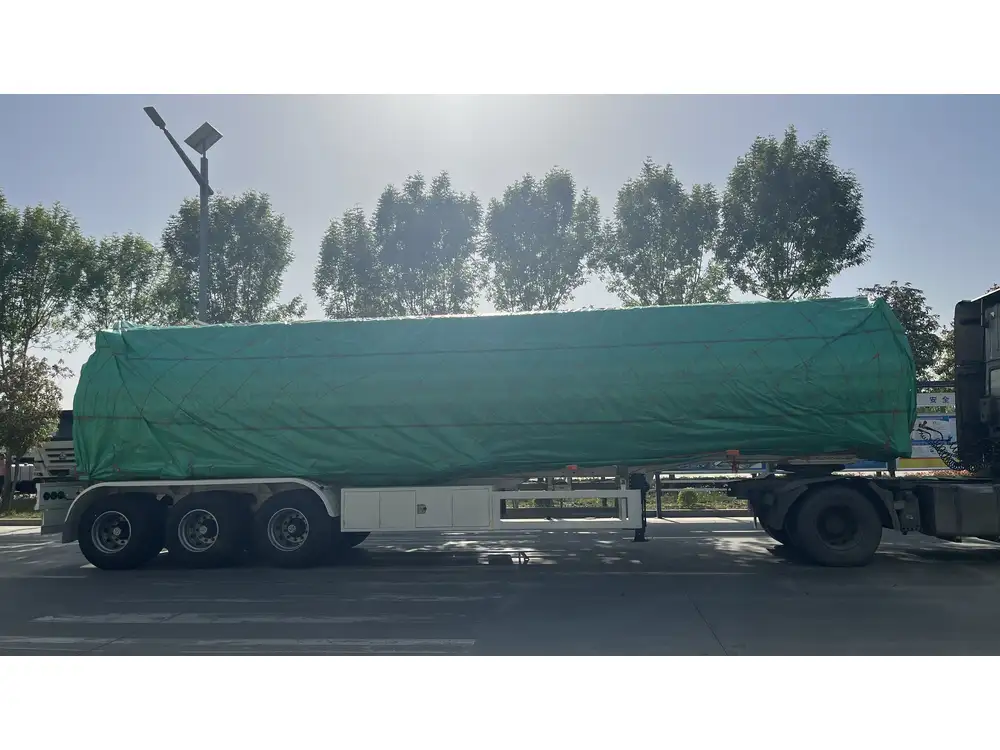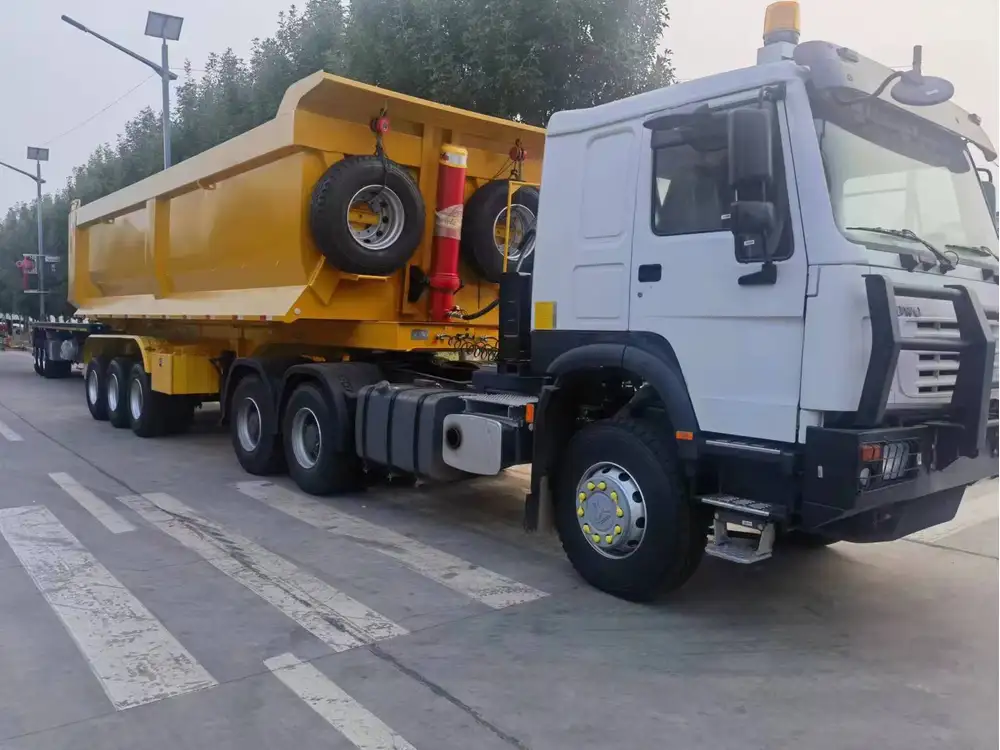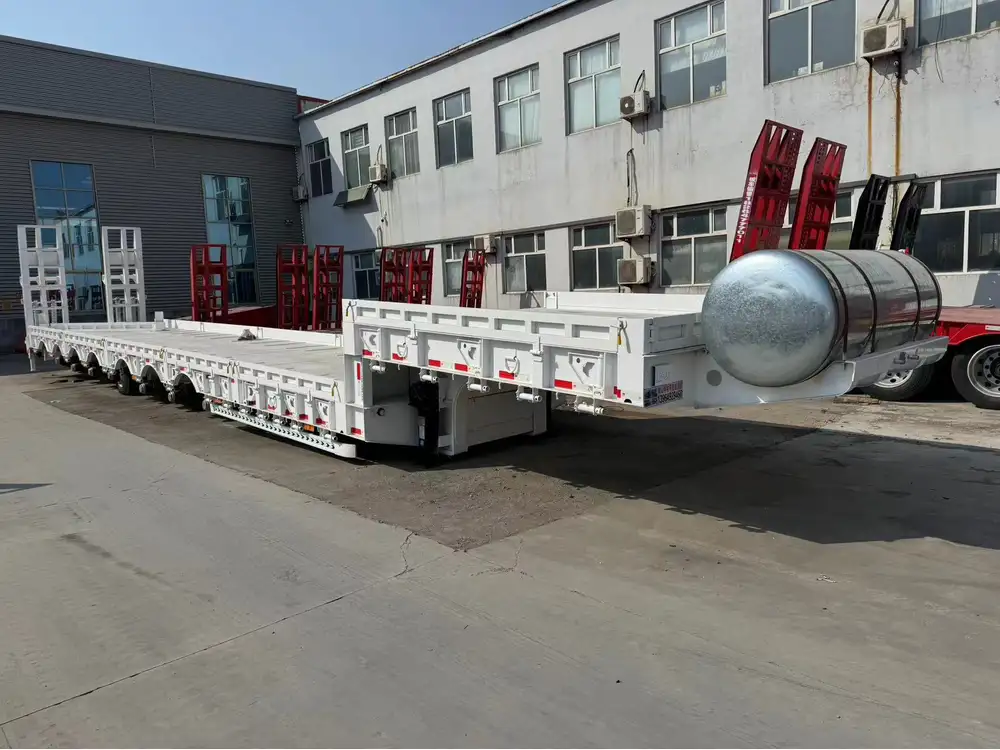When engaging in heavy-duty transportation, having precise information about your trailer’s weight is crucial. The weight of your dump trailer not only influences regulatory compliance but also significantly affects its performance, usability, and safety. In this article, we will dissect the components of dump trailer weight, provide valuable insights, and resolve common issues that users may encounter.
The Basics of Dump Trailer Weight
What is Weight?
To begin, let’s clarify what we mean by “weight.” The weight of a dump trailer includes various elements that can impact performance and capability:
- Empty Weight (Curb Weight): This is the weight of the trailer without any load. It encompasses the trailer’s structure, materials, and all standard components.
- Payload Capacity: The maximum weight that the trailer can safely carry. This figure is determined by subtracting the empty weight from the Gross Vehicle Weight Rating (GVWR).
- Gross Vehicle Weight (GVW): This represents the total weight of the trailer when loaded, including the load, trailer, and all equipment.

Why Weight Matters
Understanding your dump trailer’s weight has several advantages:
- Regulatory Compliance: Many jurisdictions enforce specific weight regulations to prevent road damage and ensure safety.
- Vehicle Compatibility: Knowing the weight helps you match the trailer with the appropriate towing vehicle.
- Operational Efficiency: Calculating load limits correctly enhances safety and reduces wear and tear on both the trailer and towing vehicle.
Factors Influencing Dump Trailer Weight
The weight of a dump trailer varies significantly based on several factors:
| Factor | Description |
|---|---|
| Size | Larger trailers typically weigh more due to increased materials and construction. |
| Material | Steel trailers usually weigh more than aluminum trailers, but often provide greater strength. |
| Design and Features | Trailers with multiple axles or additional features such as hydraulic systems may weigh more. |
| Type of Dump Trailer | There are several types, such as gooseneck or bumper-pull, that vary in weight. |
| Add-ons | Any additional features (e.g., ramps, side extensions) will add to the trailer’s total weight. |
How to Find the Weight of Your Dump Trailer

1. Consult Manufacturer Specifications
The most direct way to ascertain your trailer’s weight is by referring to the manufacturer’s specifications. Each manufacturer provides details including:
- Empty Weight
- Payload Capacity
- GVWR
This data is typically found on a sticker located on the trailer, which is usually placed on the frame or access door.
2. Weighing Your Dump Trailer
If manufacturer specifications are unavailable or outdated, physically weighing the trailer is an effective solution. Here are a few methods:
- Public Weigh Stations: Many cities have publicly available scales where you can weigh your trailer. Ensure you have a weight ticket as proof.
- Portable Scales: If frequent weighing is necessary, consider investing in portable axle scales, which allow for easy transportation and weighing.
- Local Farms or Construction Sites: These places may have heavy equipment scales that you could utilize.
3. Determine Suitable Load Capacity
To calculate how much weight you can safely load onto your trailer, use the following formula:
[ \text{Payload Capacity} = \text{GVWR} – \text{Empty Weight} ]This calculation ensures you do not exceed your trailer’s weight limits, enhancing both safety and performance during transport.

Common Issues and Considerations
Understanding Regulatory Limitations
Regulations governing weight limits can vary by state or country. Familiarize yourself with local laws, making sure you adhere to:
- Maximum axle weights
- Total vehicle weight
- Specific conditions applicable to heavy-duty vehicles
Trailer Safety Features
Being aware of the weight helps premptively manage safety features. Some important features to contemplate include:
- Braking Systems: Heavier trailers may require advanced braking systems to enhance stopping efficiency.
- Suspension Design: The suspension system should be robust enough to handle load weights without compromising safety.
- Load Distribution: Proper placement of the load can prevent trailer sway, improve handling, and promote better braking.

Performance Implications
A dump trailer that is improperly loaded can have unforeseen effects on performance. These include:
- Diminished Fuel Efficiency: Excess weight requires more power, resulting in increased fuel consumption.
- Reduced Towing Capacity: Vehicles may struggle to tow a vehicle that exceeds weight recommendations.
- Increased Wear and Tear: Overloading can cause excessive wear on tires, brakes, and suspension systems.
Practical Examples of Dump Trailer Weights
To provide perspective on the diverse options in dump trailers, here’s a comparison table:
| Trailer Type | Empty Weight | Typical Payload Capacity | Common Uses |
|---|---|---|---|
| Single Axle | 2,500 lbs | Up to 4,500 lbs | Residential landscaping, home renovation |
| Tandem Axle | 4,000 lbs | Up to 10,000 lbs | Construction debris removal |
| Gooseneck | 6,000 lbs | Up to 15,000 lbs | Heavy equipment transport |
| Dump Truck Bed | 8,000 lbs | 10,000 – 14,000 lbs | Commercial uses, road construction |
The above examples demonstrate how trailer types exhibit varied weights and capacities, tailoring to specific needs and industry standards.
Tips for Maintaining Your Dump Trailer
To optimize the performance and longevity of your dump trailer, consider the following maintenance tips:
- Regular Weight Checks: Monitor weight during routine maintenance to ensure compliance with weight regulations over time.
- Tire Inspections: Ensure tires are rated to handle the weight load, and regularly check for wear and air pressure.
- Rust Proofing: For steel models, regularly inspect and treat for rust to prolong the life of your trailer.
- Brake Maintenance: Regularly check the condition of brakes to ensure safety, especially after high-load transport.

Conclusion
Grasping the nuances of your dump trailer’s weight is not merely about numbers; it encompasses a comprehensive understanding of legal regulations, safety, and operational efficiency.
By considering factors such as trailer specifications, weighing practices, and performance implications, users can maximize their trailers’ potential while adhering to safety and legal standards. This deeper insight into dump trailer weight facilitates smooth operations, effective management, and a commitment to safety on the road.
Whether you are a seasoned contractor or a homeowner tackling landscaping projects, understanding dump trailer weight is integral to ensuring that you hit the road prepared, safe, and efficient.



